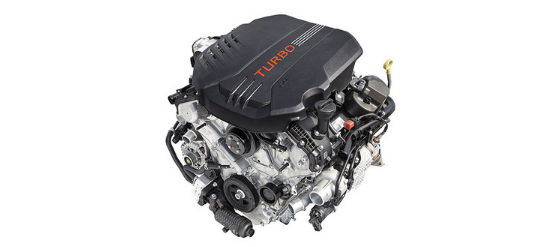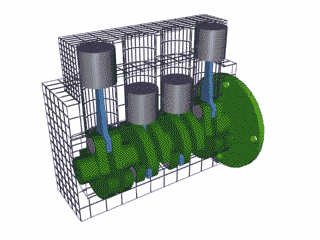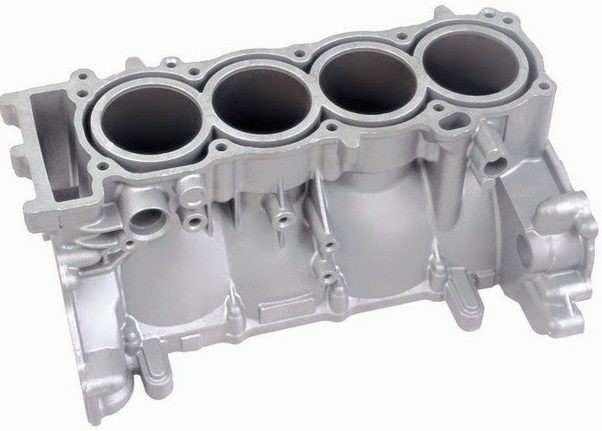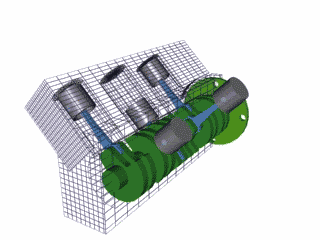
Turning a key or pressing a button is easy! Understanding what’s going on under the hood gets a little more technical from types of car engines to cylinder configurations.
The tubes, wires, and weirdly shaped pipes all do their part to make your car go further faster. Let’s take a look at:
- How Car Engines Work
- Types of Car Engines
- Cylinder Configurations
How Engines Work: Four-stroke Engine
Nowadays you’ll most likely find a four-stroke engine in your car, SUV, or truck. This means the type of car engine has 4 essential steps for internal combustion. Internal combustion consists of igniting a mixture of fuel and air to create a small controlled explosion in the cylinders. Let’s take a step back to understand exactly what that means.
Car engines are built around the cylinders, which are sealed metal tubes with a spark plug and two valves on one side, and a crankshaft on the other. Inside the cylinders are pistons. Pistons are tight fitting pumps like plungers. These are attached to the crankshaft and slide up and down retracting energy from the explosion. The inlet valve and outlet valve, let air and gas in and release exhaust, respectively.
When the spark plug ignites the gas, the pistons move and turn the crankshaft. Finally, the turning movement from the crankshaft transfers to the gearbox and moves the vehicle forward.

Wikipedia: Four-stroke cycle used in gasoline/petrol engines: intake (1), compression (2), power (3), and exhaust (4).
The movement of the pistons is created in 4 steps: intake, compression, combustion, and exhaust.
First, the piston is pulled down in the cylinder while the inlet valve injects a fuel and air mixture into the cylinder.
Second, the valve closes and the piston moves back up. This compresses the mixture to ready for ignition. After compression, the spark plug ignites.
The mini-explosion creates a hot gas that forces the piston back down which turns the crankshaft.
Finally, the force on the crankshaft powers the continued turning, forcing the piston back up. The outlet valve then opens releasing the exhaust from the cylinder.
The repetition of this process in each cylinder in rapid succession creates an enormous force that drives your vehicle forward.
Types of Car Engines: 3 Most Common Layouts

Inline Engine
Inline or Straight: This is the most common engine found in cars, SUVs, and trucks. The cylinders are upright, side by side which makes the engine compact and effective.
V: The V engines looks like a ‘v’ with the cylinders on a 60-degree angle. They are able to fit a large number of cylinders and can be found on premium or high-performance supercars.
Flat: Also known as a ‘boxer’ engine, has the cylinders lying horizontally. Gravity is working with this style. Flat engines are not common and mainly found on Porsche.
Cylinder Configurations
Previous to fuel injection and turbochargers, the number of cylinders would define the amount of power an engine has.
Fuel injection is a direct injection of fuel to the combustion chamber, compared to the use of a carburetor which relies on the suction from the pistons to pull the air and fuel mixture into the combustion chamber. Fuel injection is used in diesel engines allowing for more power, a smoother throttle response, and better fuel efficiency. A turbocharger adds extra compression onto the combustion chamber improving the efficiency and power output.
These two engine additions have allowed more power without the need for more cylinders.
The most common configuration is the four-cylinder engine (mostly inline layout). Small to mid-range cars have this under the hood. It provides a good output while remaining compact. You can find many vehicles with the turbocharger added for an extra boost.
Less commonly, we have twin cylinder cars. You see two-cylinders on small eco-friendly engines.
Three-cylinder engines are typically in a straight layout due to the uneven cylinder number and can be found on small cars or small hatchbacks the like the Mitsubishi Mirage. The fuel economy is also very good on these while remaining compact and affordable.
On the other side, the increase in cylinders to 6 are for more high-end performance and sports cars. The layout is typically a V or straight engine.
Lastly, we have 8+ cylinder engines. With 8 or more, you’re probably looking at a supercar with a V layout.
Ready to browse!
Understanding the types of car engines available and what’s in your new car doesn’t have to be a mystery. You’ll know what brings you an extra boost or which is more fuel efficient. Matt Blatt has a variety of options from our new Kia inventory with the Kia Optima‘s inline 4-cylinder engine to the Kia Sorento‘s V 6-cylinder engine! That’s not including our fast selling quality pre-owned cars.
Our team is happy to answer any further questions about engines, what’s available, and more! Contact us today.

V Engine




 Warranties include 10-year/100,000-mile powertrain and 5-year/60,000-mile basic. All warranties and roadside assistance are limited. See retailer for warranty details.
Warranties include 10-year/100,000-mile powertrain and 5-year/60,000-mile basic. All warranties and roadside assistance are limited. See retailer for warranty details.